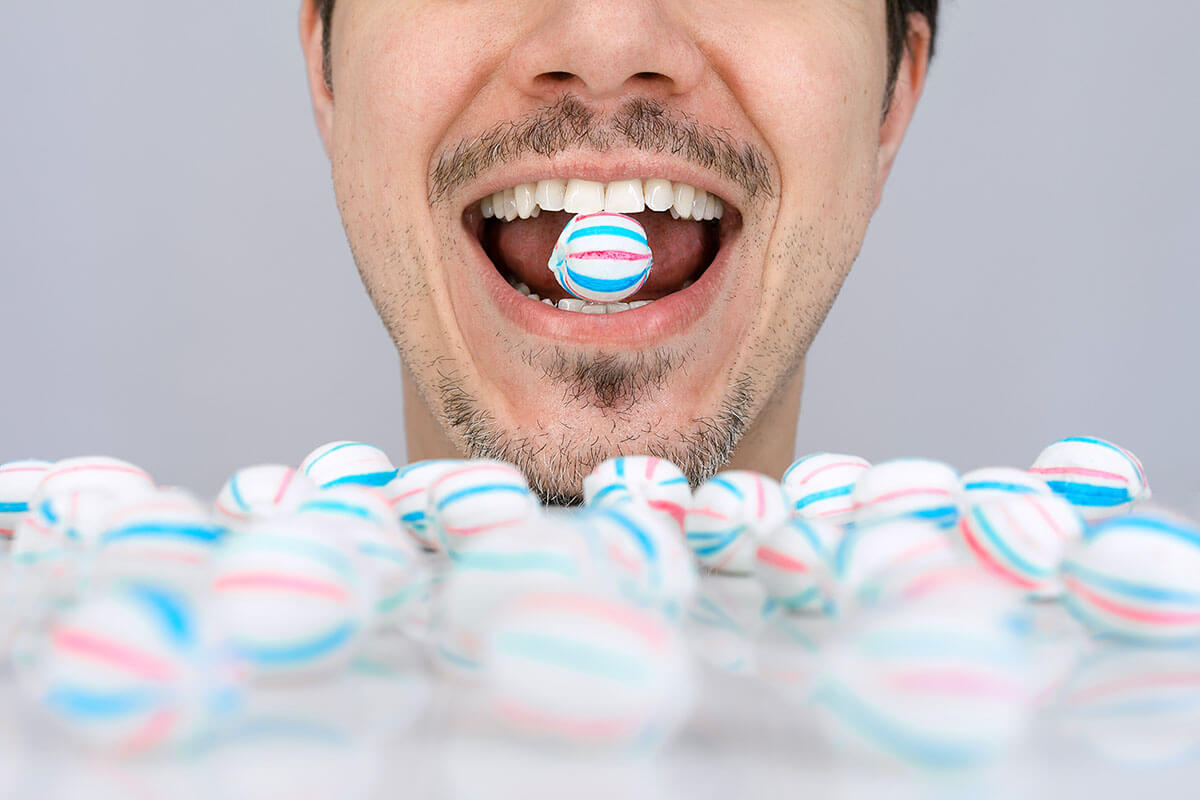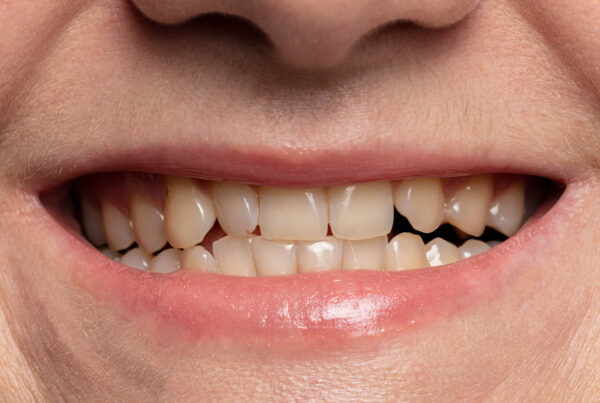It’s Spooky Season which means it’s also time for trick or treating. We’ve heard it our whole lives and we probably tell kids – “Candy is bad for your teeth,” but is that really true?
Unfortunately, yes, it is, but with proper dental care, you can help combat its effects.

One reason candy is bad for your teeth is because it is high in sugar. And sugar is exactly what the bad bacteria in your mouth feed off of.
The harmful bacteria eat away at the enamel on your teeth and eventually result in tooth decay and cavities. So, it’s not actually the sugar causing the cavities, but the bacteria that is feeding off of the sugar and breaking down our tooth enamel. That means that cavities are bacterial infections that attack our teeth.
Sugar is the favorite food for harmful bacteria in the mouth.
It’s our saliva’s job to clear away any food particles that will lead to tooth decay.
Candy that is sticky and holds on to the teeth is worse than other sweets because the saliva is not effective at clearing the leftover food particles from the teeth. The candy, literally, sticks around and that is what leads to cavities. Sour candies are also some of the worst candies for your teeth because they are already highly acidic which breaks down tooth enamel.
Hard candies are also potentially very dangerous for your teeth. If you have a habit of biting on or chewing hard candies, this could weaken, crack, or even break your teeth. Do not bite on hard candies because it may damage your teeth. Also, because they last a long time in your mouth, it gives the bacteria more of a chance to affect the tooth enamel.

There are some things you can do to lessen the negative effects of candy on your teeth.
- Make sure you stay hydrated. Dry mouth leads to other oral issues, like tooth decay. It is important for your oral health that you have a healthy supply of saliva production in your mouth.
- Eat candy with meals. When candy is eaten at mealtime, saliva production increases. Saliva not only cancels the acids in mouths, but it also helps wash away food particles.
- Brush after eating. By brushing after eating, you remove enamel-eating bacteria. However, there’s an important caveat. When acidic candies (or acidic sports beverages, fruits, etc.) are consumed, brushing right after eating is more damaging to enamel than not brushing. This is because you are actually pushing the sugar further into the crevices of your teeth. Instead, rinse with water and wait about 30 minutes after eating before brushing your teeth.
Brushing your teeth regularly, as part of your morning and night routine, and flossing daily, is integral in maintaining oral health, especially if you like to eat candy.
If you forget to brush your teeth and floss, the bacteria turns into plaque. That then further hardens into tartar. Both of these substances are difficult to remove and allow the bacteria to continue to decay the teeth. Once the enamel is stripped away it doesn’t take long for cavities to form. If cavities are neglected the decay can reach the inside of the tooth, cause an infection, and effectively kill it — which causes it to fall out or need to be pulled.
We don’t want your oral health to get to a point where we are pulling teeth due to cavities. If you visit us for your regular dental hygiene visits, and get a cleaning every 6 months as recommended, we will be able to get ahead of any potential problems. Preventative care is key to maintaining a healthy mouth. You can click HERE to schedule your next appointment.
A type of candy that is not so bad for your teeth is sugar-free gum. Gum high in Xylitol, like Icebreaker Ice Cubes, stimulate saliva production which helps break down the harmful bacteria. If you must eat candy, opt for sugar-free versions of lollipops and hard candies which can stimulate saliva as well. Dark Chocolate is another good choice. It is lower in sugar than milk chocolate and it’s full of antioxidants.




